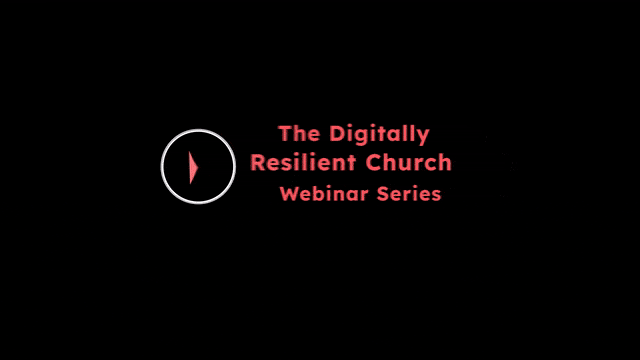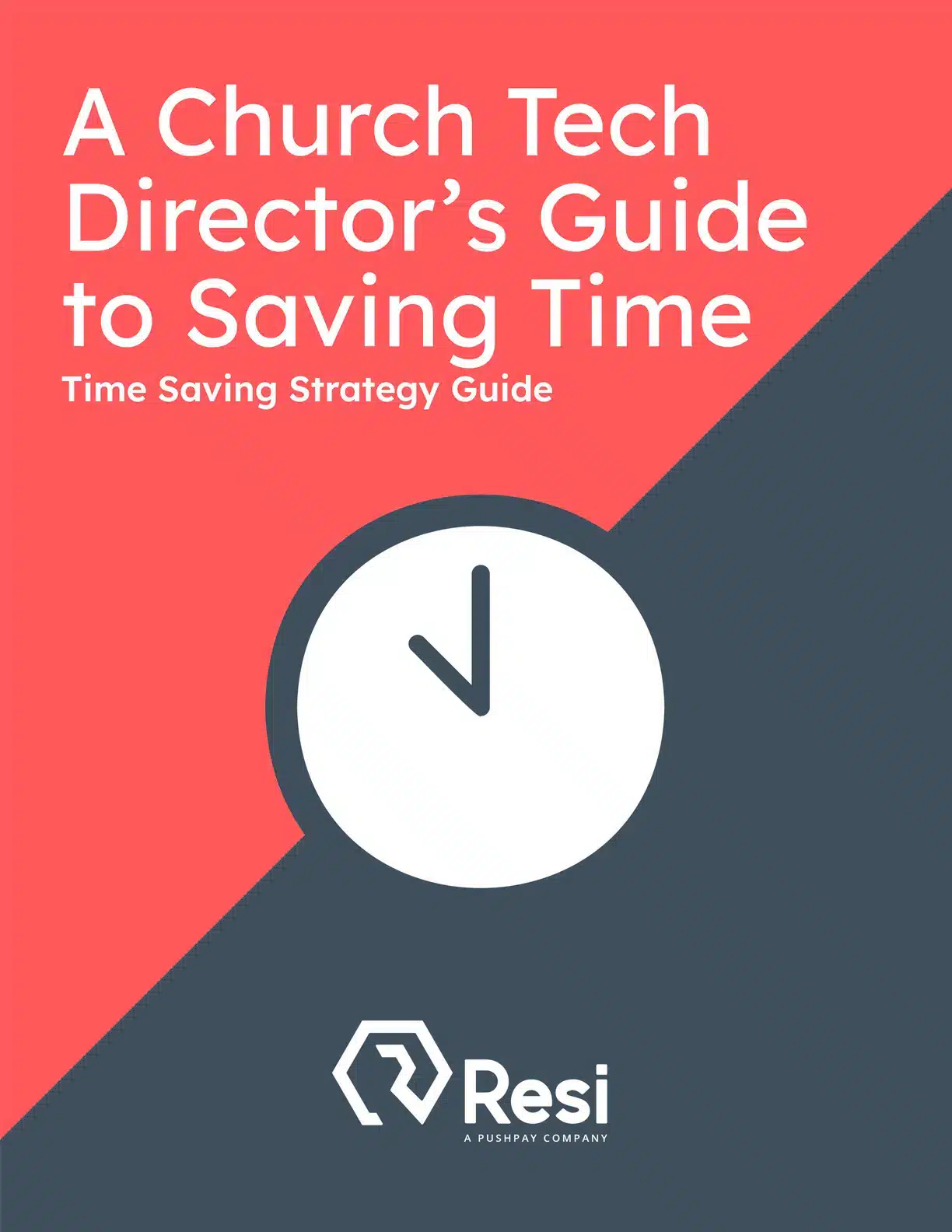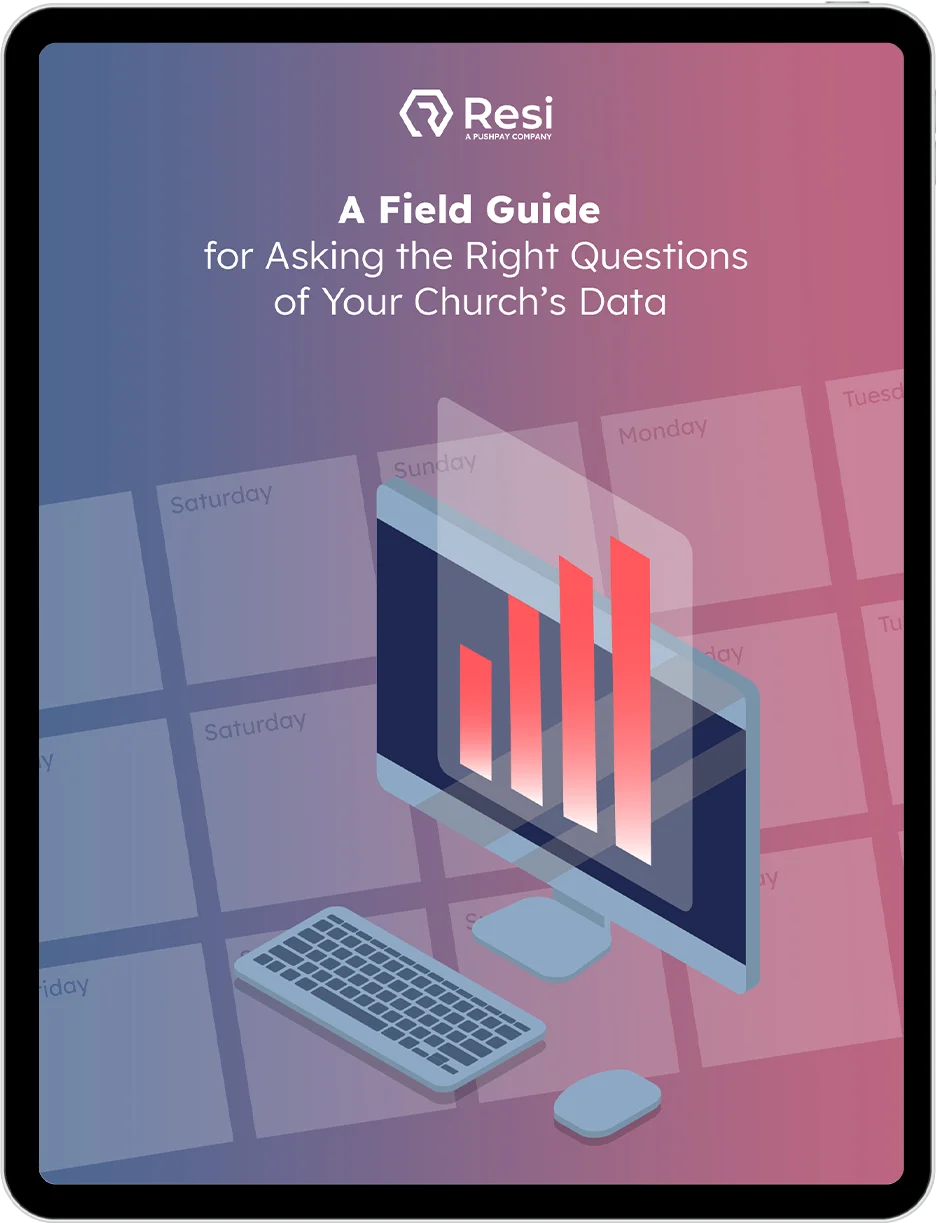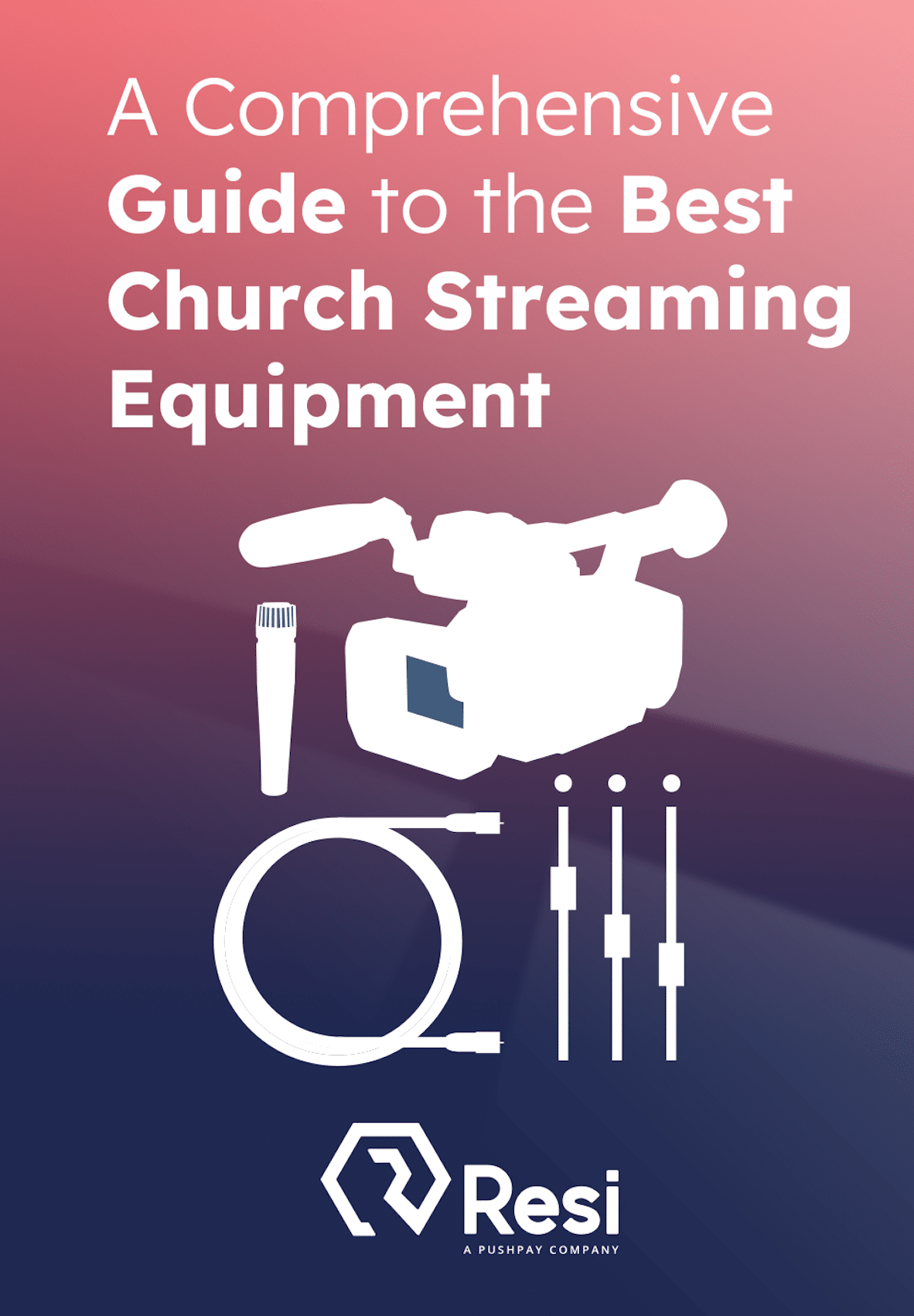
So, you’re broadcasting church services and want to take the next step into digital discipleship. But someone from your leadership, maybe a lead pastor, executive pastor, or even an elder board, doesn’t see the purpose in digital ministry or discipleship. What should you do?
Well, right off the bat, you’re not alone. In 2024, we know that 91% of churches stream their church services online, and 90% consider their ministry “hybrid” at some level, but as we lean more into the community aspects of digital, churches are hesitant to take that step. You’ve probably heard it said: “Discipleship needs to happen in the building, not online. Digital’s job is to get people into the building.”
The Digitally Resilient Church Webinar
Featuring Jeff Reed from THECHURCH.DIGITAL, learn to leverage your digital strategy and livestreams for maximum local reach and community impact.
Access Now
I dare say tens of thousands of churches are in the same position as you. You see an opportunity. You want to move in that direction, or at least explore it at a greater level, but something is preventing you from expanding into digital ministry. Maybe it’s a lack of aligned vision, misconceptions of digital ministry, or even unclarity around the word “discipleship.” There are many reasons why leadership may disconnect from the idea of digital—understanding their “why” is a necessary step before you figure out “how” to respond.
When partnering with church leadership, “why” is much more interesting than “how.”
Honestly, I did not always do this with churches I worked for. I was not the best church employee, often responding passionately and angrily when questioned. In my mind, unfortunately, I had to fight for digital ministry every single day. My passion was catching. I had teams of people as passionate about digital as I was. Yet, I had a limited understanding of the questions leadership was asking. And, since I didn’t care enough to listen to their questions, I didn’t know enough to help them find their answers. In the end, this cost me.
In an earlier blog, I talked about addressing the questions that your senior pastor or other leadership may ask specific to digital ministry. Understanding not only their questions but also their motivations and biases can go a long way in helping your leadership find the win in digital ministry.
That being said, let’s move beyond the “theological” concerns leadership may have towards digital. A better understanding of Hebrews 10:25’s “don’t forsake the gathering” can solve many problems. Still, at the heart of most churches, distrust of digital discipleship is a foundational issue, not with digital or even discipleship. The issue comes down to community.
Your pastor, elder board, or leadership team does not believe in digital discipleship because they’ve never seen an influential digital community for the church. That being said, we can fix that.
Taking Back Monday: A Church Tech Director’s Guide to Saving Time
With this resource, you can take back time on Mondays and focus on what matters most—serving your ministry.
Download for free!
[Digital] community always comes before [digital] discipleship
There’s a simple formula we use when we talk about digital discipleship:
The people we’re digitally connected to (those we’re reaching online) should be invited into a community where we can build disciple-making relationships with them. We often use a shortcode for this: Connections -> Community -> Discipleship.
In 2024 culture, true life-changing discipleship requires community. Digitally, oftentimes, people find community before they find Christ. Evangelism and Discipleship are grounded in trust. People will not make a life-changing decision based on what you say unless they trust you. You won’t change someone’s life by screaming into a megaphone. Instead, you gain their respect by sitting with them at a table and talking. Whispers, not shouts, change lives.
In today’s culture, you have to have community to build that level of trust. Community is the soil that grows discipleship. Without community, discipleship can still happen, but it’s very hard. The seed can grow without soil. That being said, discipleship without community is hard to reproduce.
This Connections -> Community -> Discipleship model works in physical space, too, by the way. How often does your pastor talk about inviting people to church on Sunday? Physical church buildings serve as the center of our Christian community, a spiritual refuge for people to enter. The ultimate question we need to ask is: can digital community provide that same spiritual refuge?
What does a digital community look like for your church? For the Church?
This is the question. What would a church’s digital community look like? Some churches, like Crossroads Church in Ohio, are beginning to explore the space. Utilizing third-party software like Mighty Networks, Crossroads creates a digital community where the people the church connects with digitally and physically can come together and build relationships… better said, come together and build trust. That’s the point: build trust.
Andy Reider, Anywhere Pastor at Crossroads, is talking about their Mighty Networks.

Mighty Networks is just one option for the community. Some churches experiment with Slack or look at Facebook Groups or WhatsApp broadcast channels. At a personal level, my organization theChurch.digital utilizes Discord – you can check out our community at http://discord.theChurch.digital. Like social media, you choose your platform based on the audience you have or you want to have.
The answer to the digital discipleship question. The challenge of social space.
What do these digital communities look like? Let’s look at the overall picture and discuss what’s missing. We need to understand there are four different types of community. Daniel Im has done a lot of research on these topics, so let’s put these into a church context:
- Public Space (50+ people) – Sunday morning large gathering.
- Social Space (20-50 people) – ???
- Personal Space (8-12 people) – Small group, either physical or digital.
- Intimate Space (1-3 people) – Intimate friends at church. Discipleship/mentor relationship.
Master the Art of Church Metrics
Get insights on how to analyze your data, spot trends, and transform these findings into strategies that propel your ministry forward.
Download now
Daniel Im, in his book No Silver Bullets, talks about how the church has never really taken advantage of the “social space.” We push people from public space to personal space in hopes that discipleship relationships will happen in that small group. And, sometimes, they do. Oftentimes, they don’t… because there’s not enough trust yet. The social space is where trust is built physically (and, I would suggest, digitally.) To quote Daniel on Social Space:
This is a party-like environment where we are safe to decide who we would like to grow a deeper relationship with. It’s big enough that a newcomer won’t feel like they’re the center of attention, yet it’s small enough that no one will fall through the cracks. It’s big enough that everyone will find someone to connect with, but it’s small enough that meaningful conversation can take place without it being uncomfortable. You belong, you are part of a community, and it’s a safe place to take that next step.
Ladies and gentlemen, this is the challenge of a digital community for a church. Sure, we may break the 20-50 boundaries, but if we’re honest, digital can scale quickly. But, as Daniel suggests, can digital community:
- Make a newcomer feel like they’re the center of attention? Yes
- Keep people from falling through the cracks? Sure
- Everyone will find someone to connect with? When done right
- Small enough that meaningful conversations can take place? Certainly
- You belong, you are part of a community, a safe space…
Solve the physical discipleship dilemma digitally.
The missing piece of digital discipleship is digital community, but what would happen if we connected our physical discipleship to digital community? What would happen if our physical discipleship processes utilized social space to build trust slowly?
Maybe, just maybe, we would see more people join physical small groups. We could see people engage longer in small groups because they took the time to find the right group to connect with. Lines could be blurred in a true hybrid fashion, and people could engage in discipleship physically and digitally.
The challenge before us is to be a digitally resilient church that is hybrid not just in public space (broadcasting church services) but throughout the discipleship process—engaging in digital community birth a new discipleship channel digitally and solves a significant problem physically. That being said, why would you not give it a try?






